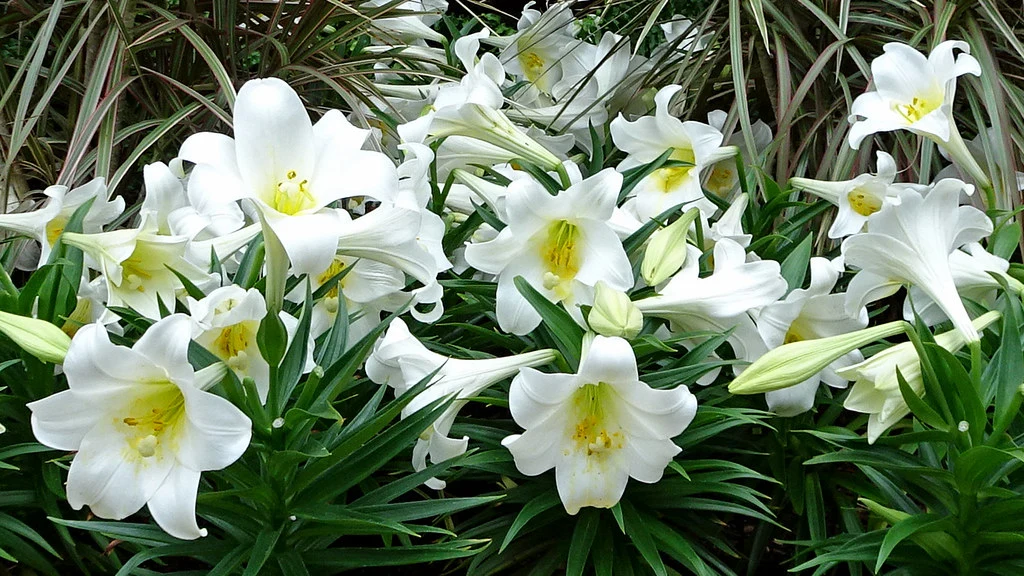Easter lilies are beautiful and fragrant flowers that can brighten up any garden or home. These flowers are traditionally associated with Easter and are often used to decorate churches and homes during the holiday season. If you are interested in growing Easter lilies, there are several tips and tricks that you should keep in mind to ensure that your flowers thrive. In this article, we will cover everything you need to know about growing Easter lilies.
Choosing the Right Location for Your Easter Lilies
One of the most important factors to consider when growing Easter lilies is the location. These flowers require a lot of sunlight and well-draining soil to thrive. Therefore, it is essential to choose a location that receives at least six hours of direct sunlight per day. If you are growing Easter lilies indoors, you can place them near a south-facing window to ensure that they receive enough sunlight.
Preparing the Soil for Your Easter Lilies
Before planting your Easter lilies, it is essential to prepare the soil properly. These flowers require well-draining soil that is rich in organic matter. You can improve the soil quality by adding compost or well-rotted manure to the soil. Make sure to mix the compost or manure thoroughly with the soil to ensure that the nutrients are evenly distributed.
Planting Easter Lilies
Once you have prepared the soil, you can plant your Easter lilies. It is best to plant them in the fall, around six weeks before the first frost. This will give the roots enough time to establish before the winter. When planting your Easter lilies, make sure to plant them at a depth of around six inches. You should also space the bulbs around eight inches apart to allow room for growth.
Watering Your Easter Lilies
Easter lilies require regular watering to thrive. However, it is important not to overwater them, as this can cause the bulbs to rot. You should water your Easter lilies deeply once a week, or whenever the top inch of soil feels dry to the touch. It is best to water them in the morning, as this will give the foliage enough time to dry before nightfall.
Fertilizing Your Easter Lilies
Easter lilies require regular fertilization to ensure that they receive all the nutrients they need to thrive. You can fertilize your Easter lilies with a balanced fertilizer every four to six weeks during the growing season. Make sure to follow the instructions on the fertilizer package carefully to avoid over-fertilization, which can damage the bulbs.
Protecting Your Easter Lilies from Pests and Diseases
Easter lilies can be susceptible to pests and diseases, including aphids, mites, and botrytis. To protect your Easter lilies from pests, you can spray them with a solution of neem oil and water. You should also keep an eye out for any signs of disease, such as brown spots on the leaves or wilting foliage. If you notice any signs of disease, you should remove the affected leaves or bulbs immediately to prevent the disease from spreading.
Storing Easter Lily Bulbs
If you live in an area with cold winters, you may need to store your Easter lily bulbs indoors during the winter months. To store your bulbs, you should dig them up after the foliage has died back, brush off any excess soil, and store them in a cool, dry place. You can also store them in peat moss or vermiculite to keep them moist.
Troubleshooting Common Easter Lily Problems
Even with the best care, Easter lilies can sometimes run into problems. Some common issues include yellowing foliage, drooping flowers, and stunted growth. These problems can be caused by a variety of factors, including overwatering, underwatering, poor soil quality, pests, and disease. To troubleshoot these problems, it is important to identify the underlying cause and address it accordingly. For example, if your Easter lilies are yellowing, this may be a sign of overwatering. In this case, you should cut back on watering and make sure the soil is well-draining.
Harvesting Easter Lily Flowers
Once your Easter lilies start blooming, you can harvest the flowers for indoor use or decoration. To harvest the flowers, you should wait until they are fully open and the pollen has not yet fallen. You can then cut the stem to the desired length and place the flowers in a vase with water. Easter lilies can last up to two weeks in a vase if they are properly cared for.
Conclusion
Growing Easter lilies can be a rewarding experience, but it requires careful attention to detail and proper care. By following the tips and tricks outlined in this article, you can ensure that your Easter lilies thrive and produce beautiful, fragrant flowers year after year.
FAQs
- When should I plant Easter lilies?
- It is best to plant Easter lilies in the fall, around six weeks before the first frost.
- How much sunlight do Easter lilies need?
- Easter lilies require at least six hours of direct sunlight per day.
- How often should I water my Easter lilies?
- You should water your Easter lilies deeply once a week, or whenever the top inch of soil feels dry to the touch.
- How do I protect my Easter lilies from pests and diseases?
- You can protect your Easter lilies from pests and diseases by spraying them with a solution of neem oil and water and keeping an eye out for any signs of disease.
- How long do Easter lily flowers last in a vase?
- Easter lily flowers can last up to two weeks in a vase if they are properly cared for.

4 thoughts on “Growing Easter Lilies: Tips and Tricks”